Birds are perhaps one of the most fascinating topics of the animal kingdom. Sure, lions and tigers often look royal, and tiny rabbits are cute and adorable. But with birds, you don’t often know what you’re getting. There’s such a variety that it’s enough to send you spinning—water birds that spend most of their life floating, birds whose wings are purely decorative and they struggle to get off the ground; there are small ones with beautiful colors and giant birds that look like a sentient storm cloud. And then there are some that clearly took the brunt of the overflowing number of species, and that’s clearly reflected in their names.
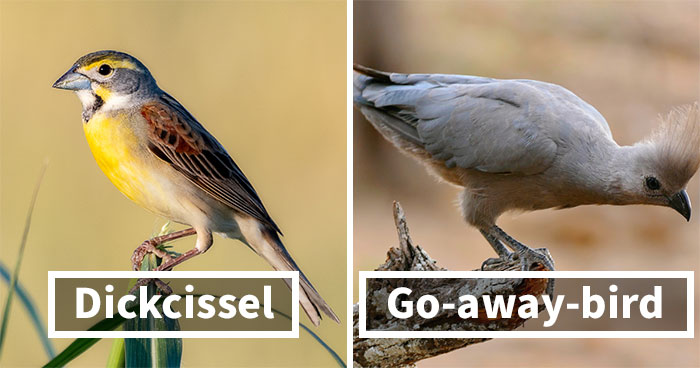
Twitter user stu_bot3000 created a thread that went viral featuring birds that seemingly were named by people who dislike them, as poor ornithologists likely ran out of majestic-sounding names and had to settle (but at least now we know that the “birb” memes certainly have enough foundation). With 73.4K views and 19K retweets, the discussion on the names of winged creatures took off running.
#1 Satanic Nightjar
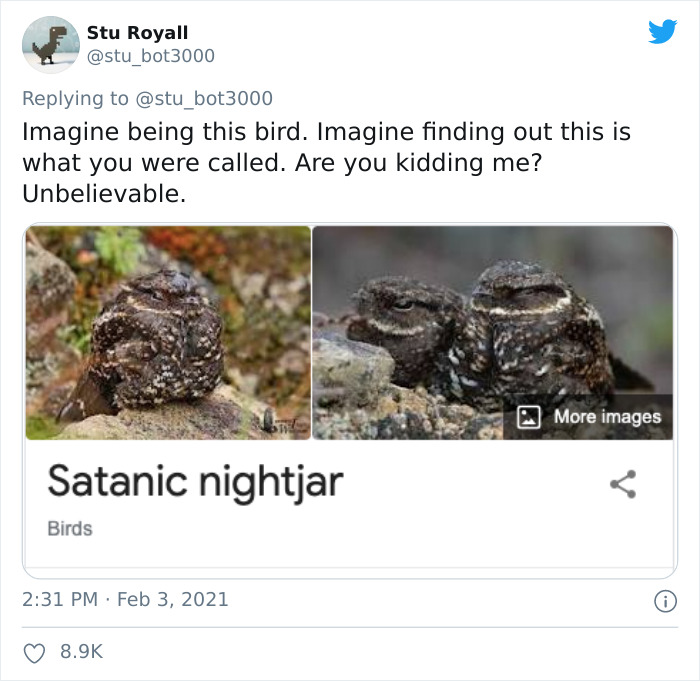
Regardless of the name, satanic nightjars don’t run cults or offer sacrifices. It’s just a medium-sized, greyish brown spotted bird. It was discovered about 90 years ago in Sulawesi (and then re-discovered in 1996). It earned its name because locals believed it was a demonic entity due the sounds it lets out at night.
#2 Boobies

Boobies are the bird species that can be singled out for their bright blue feet (a feature only the males have, and the bluer they are, the better!). The feet are used to attract prospective mates by performing a high-stepping strut, so the species incorporate a performance with the visuals.
#3 Little Bustard
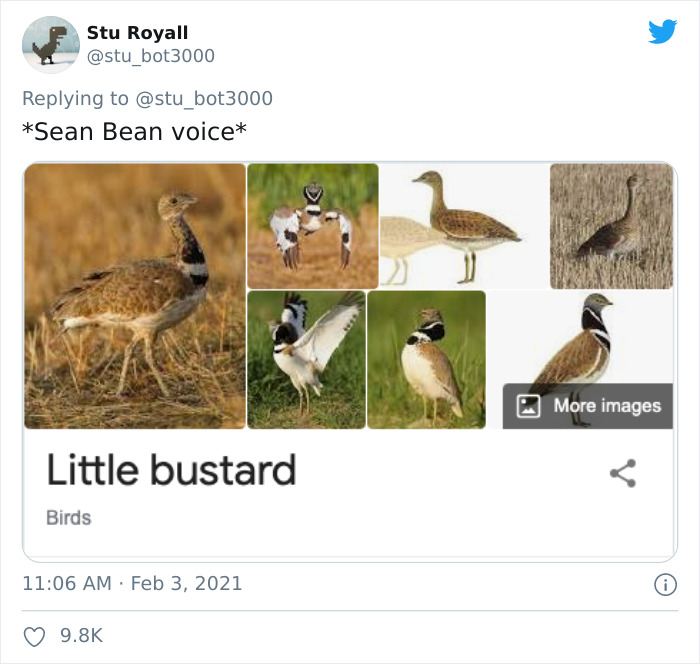
Little bustards are one of the larger birds on this list, despite what its name might suggest. Usually fairly quiet and unobtrusive, males preparing for breeding have distinctive plumage with a black neck and double V-shaped white collar. However, the population of these birds is decreasing.
#4 Dickcissel
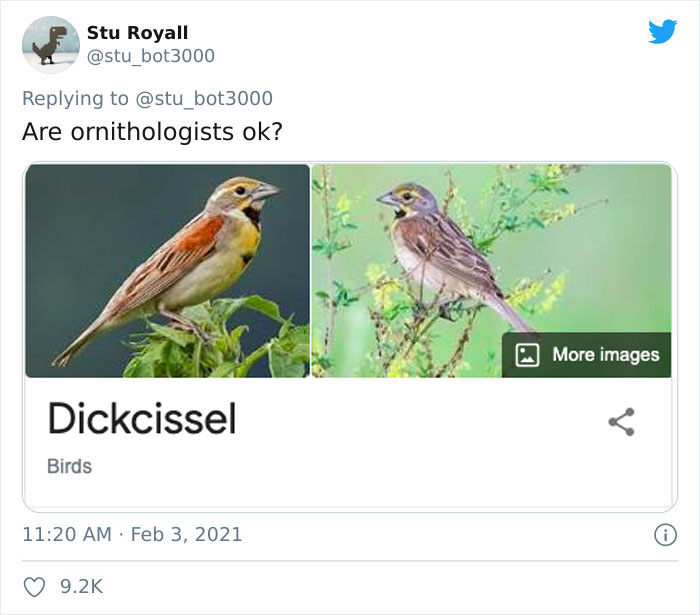
Dickcissels typically can be found in the North American prairies. They eat seeds and are ground foragers, and when it’s time to migrate, they can flock in large numbers, sometimes reaching thousands, and while wintering, those flocks can number in the millions.
#5 Tiny Sky-Tyrant
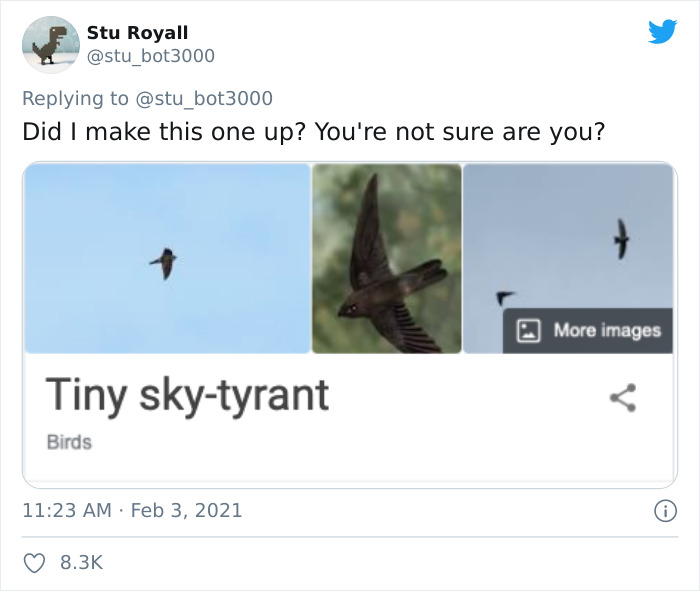
#6 Go-Away-Bird
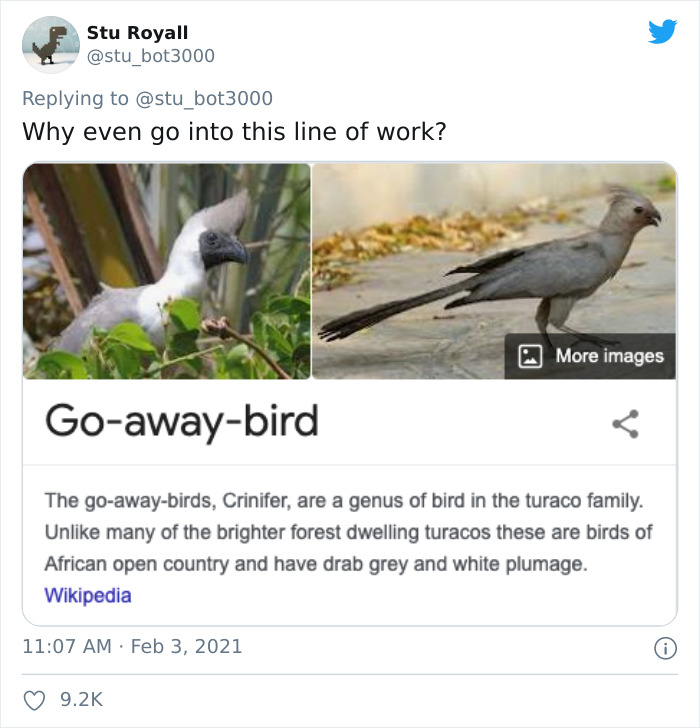
Go-away-birds are known for their long tails that flop up and down while in flight. They tend to stick to small groups and like to perch on trees and bushes. But their name comes from their nasal sound that sounds very much like “go-waaay,” which earned them the name.
#7 Penduline Tit

Penduline tits live up to their name, making elaborate bag nests which they hang from trees near water. They even use spiderweb, animal hair and soft plant materials to create the nest. The construction even has a false opening that leads to a false chamber, and the true interior of the nest is hidden behind a secret door.
#8 Horned Screamer

National Geographic aptly titled horned screamers the unicorns of the bird world. It’s the only horned bird in the world, but the horn is not used for fights—it’s only ornamental. The horn is loosely attached and will snap off when it grows too big, and then later, it grows back.
#9 Fluffy-Backed Tit-Babbler
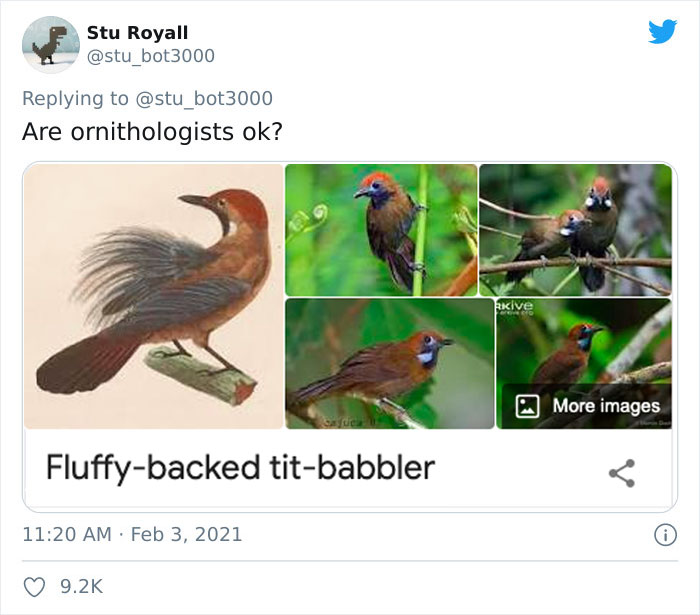
The fluffy-backed tit-babbler is a near-threatened species found in Brunei, Indonesia, Malaysia, and Thailand. Their preferred habitats are facing deforestation or similar forms of conversion, causing the species to decline.
#10 Sad Flycatcher
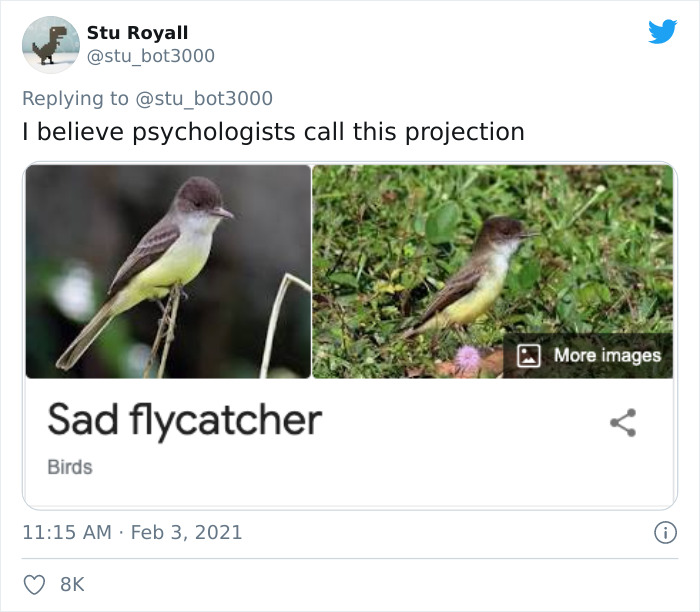
Despite the name, the sad flycatcher is not sad in any way. It does have a small bill, but that’s not enough to discourage this woodland species. These birds are native to Jamaica and prefer to stick to various forests.
#11 Smew

Smews are diving ducks that live in northern Europe and Asia. They are migrating birds, meaning they will leave their natural habitat to spend winters somewhere else in order to escape colder climates. It is male smews that have the distinct white-and-black plumage.
Tiny sky-tyrant
#12 Sombre Tit

The sombre tit lives in southeast Europe and southwest Asia. These birds make their nest in the holes of the trees, such as juniper or willow, and they lay eggs twice a year. The species also appears to be somewhat stationary, with slight local movements, and they don’t migrate half a world away.
#13 Typical Swift
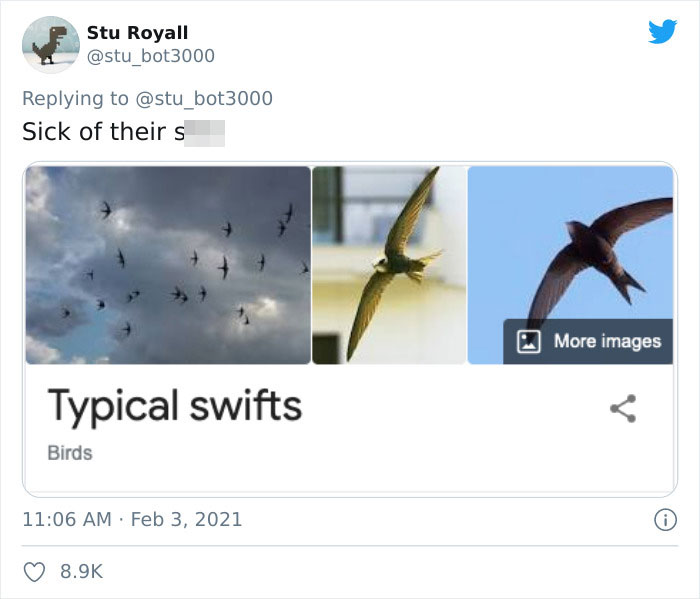
The typical or common swift follows its name to the letter. Their feathers are in dark colors, with no outrageous features, but it lives up to the swift title, spending as much as ten months per year in continuous flight. Germans even call this bird “wall-glider” as a tribute to its ability to cling to vertical surfaces.
#14 European Shag

European shags can be found in western Europe and northern Africa. There are three subspecies: living in the north (like Iceland), in mild climates (such as the central Mediterranean), and those preferring warm weather (like the coasts of northern Africa).
#15 Rough-Faced Shag

The rough-faced shag is a rare species from New Zealand. For close to 200+ years, their small population was confined to four islands in the Marlborough Sounds area, and due to this, these birds are considered vulnerable. And instead of exquisite singing, this bird lets out croaking noises.
#16 Common Loon
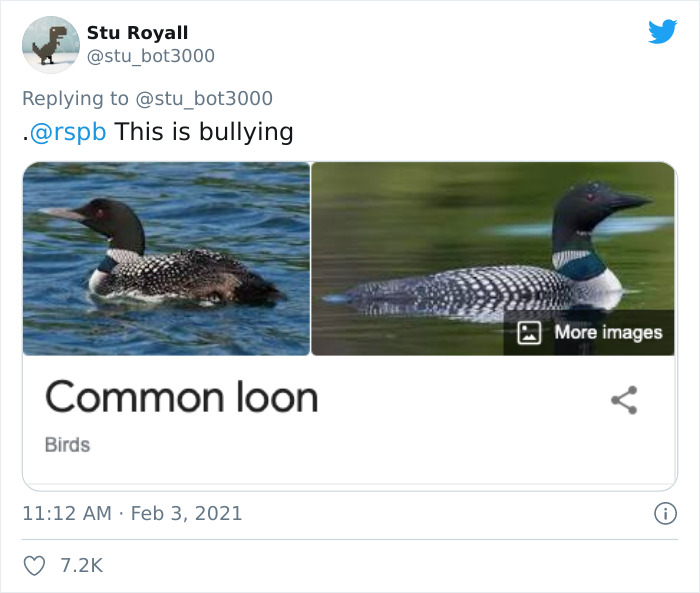
Common loons are water birds, often found near coastal waters. They catch fish underwater, using their feet as a propeller. They are fast swimmers and equally fast fliers and can reach speeds of 70 mph. Fun fact: in order to fly, these birds need to have a running start, not unlike a plane that’s about to take off.
#17 Red-Rumped Bush-Tyrant

The red-rumped bush-tyrant can be recognized for its dual coloring. The upper body of the bird is gray, while the belly is bright. It also has extensive rufous webbing on the tail feathers. The species likes a humid environment with plenty of trees.
#18 Noisy Pitta
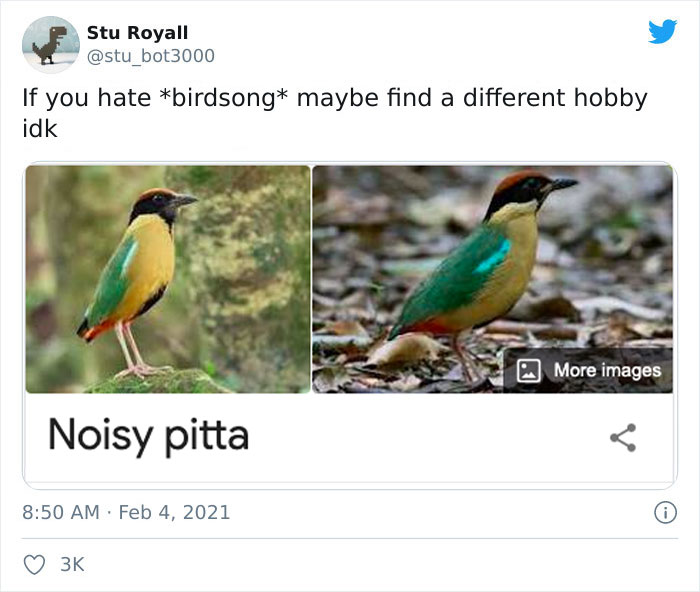
The noisy pitta can be found in areas of Australia and New South Wales. They are known to use anvils (which can be a polished stone stuck in the ground, a tree stump, or even a broken bottle) to break up food such as snails, which are some of their favorite foods. Some anvils can be used for years, like a long-lasting tool.
#19 Noisy Miner
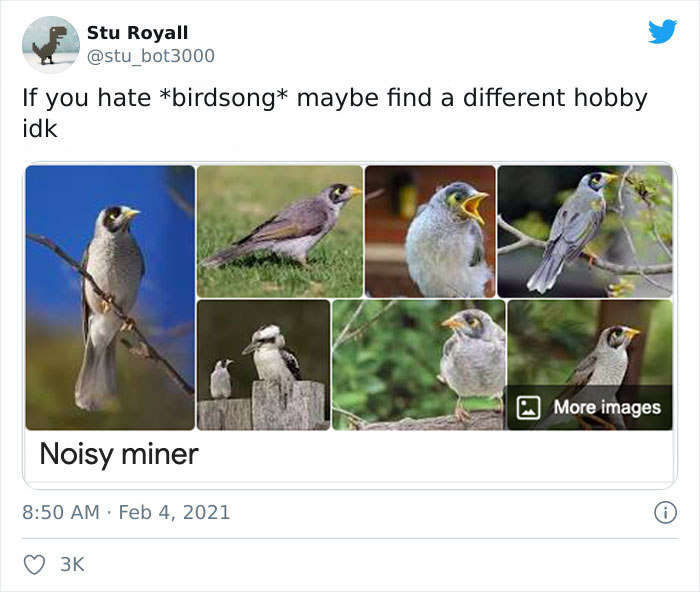
Noisy miners are not the biggest of birds, but despite that, they aggressively attack larger birds such as hawks. They stick to their aggressive strategy so much that there are very few (if any) other bird species in their territory.
#20 Spangled Drongo
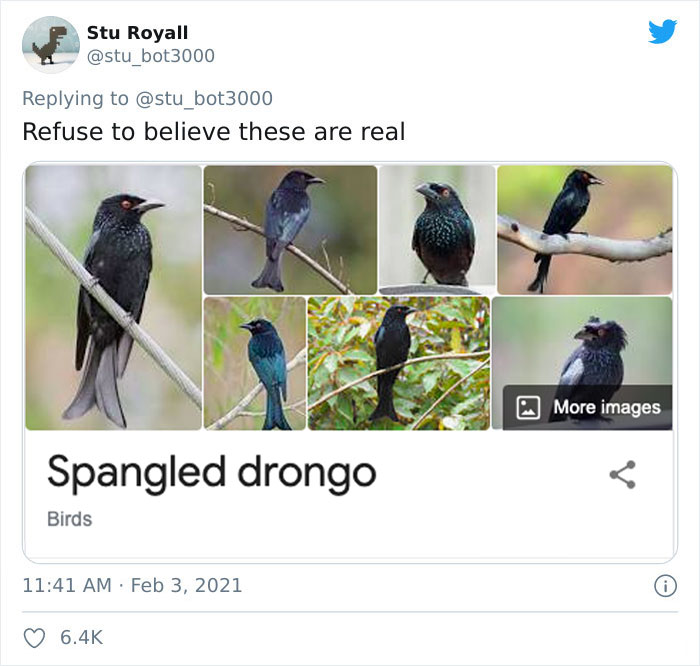
The spangled drongo has glossy black plumage with iridescent blue-green spots (spangles), hence the name. Its blood-red eyes also stand out from the otherwise dark plumage. These birds are not against working together, as often they flock together to ‘hawk’ flying insects for food.
#21 Hoary Puffleg

Hoary pufflegs are rare South American hummingbirds. They can be found in areas of the Andes and northwest Ecuador. They prefer evergreen forests at a 1,100-2,500 m altitude. Due to their limited range and declining population, they are considered a threatened species.
#22 Swallow

Swallow is a very broad name encapsulating approximately 90 species. These birds are not very big, and often have dark plumage. They are very agile and spend much of their time in the air, catching insects. They can be found worldwide, and more distinct features depend on specific species.
#23 Ruddy Pigeon
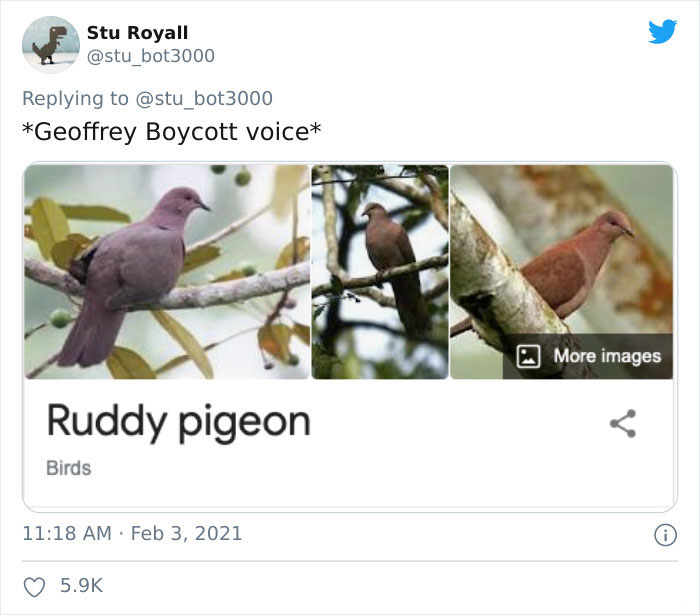
Ruddy pigeons can be found in Costa Rica, Ecuador, and Brazil, and they prefer higher, 1500-meter altitudes. They can be recognized by their unpatterned and mainly wine-purple color of the feathers. The species can often be noticed in pairs, searching for fruits and berries.
#24 Drab Seedeater
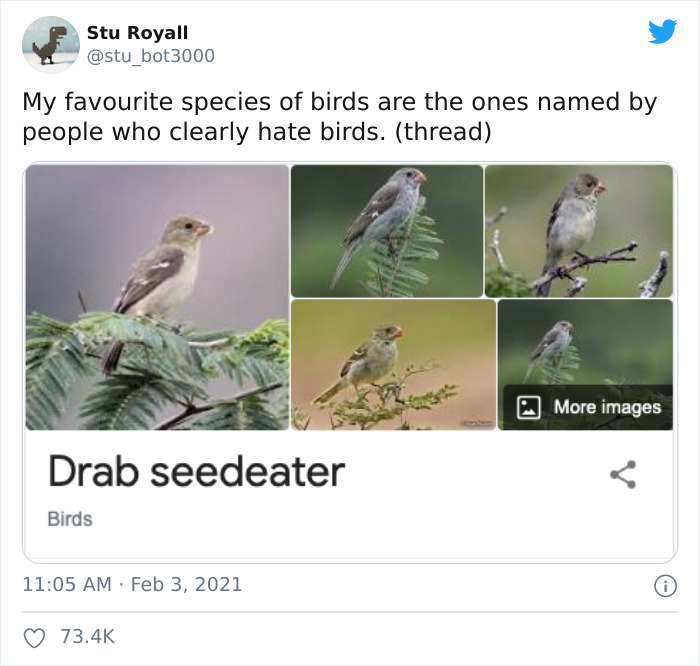
The drab seedeater is found in South America, typically in Ecuador and Peru, and luckily, they are not facing any form of extinction. They like subtropical or tropical shrublands, and the birds themselves don’t have any distinct features, hence the name “drab.”
#25 Perplexing Scrubwren

Perplexing scrubwrens live in Indonesia and Papua New Guinea, preferring moist lowland forests. The species’ perplexing name arose due to the difficulty it causes while trying to classify it, since living in some areas, this bird interbreeds with larger scrubwren species, and while living in other regions, it doesn’t display this behavior.
#26 Monotonous Lark
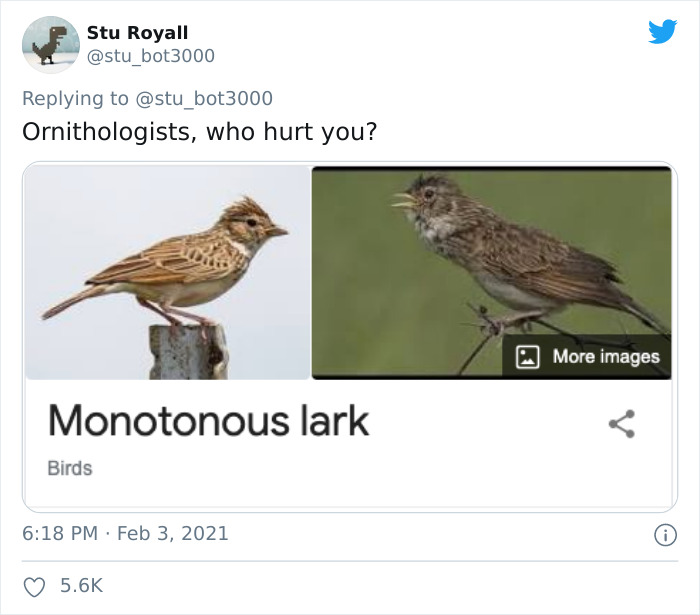
The monotonous lark earned its name due to the males insistently singing a croaking, gurgling, distinctive four-note song every 3-5 seconds for hours, regardless of whether it’s day or night. While singing, the bird will puff out, stretch its neck, and raise a small crest.
#27 Noisy Friarbird
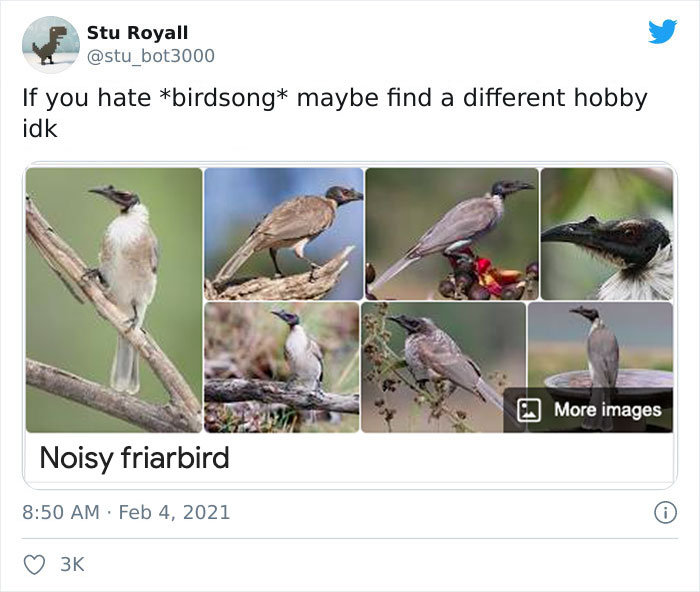
Noisy friarbirds are sometimes referred to as “leatherheads” because of their bare black head. However, despite this species’ appearance, they are honeyeaters and you can often spot them in the outer canopy of flowering trees, especially eucalypts.
#28 Noisy Scrub-Bird
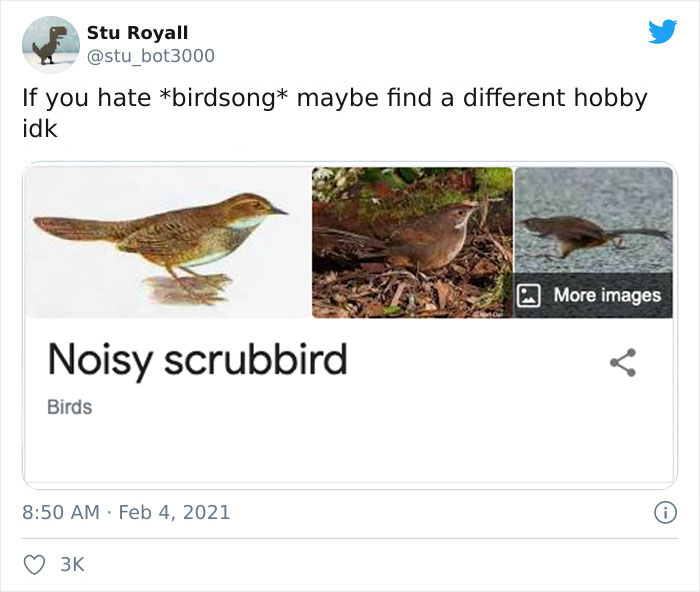
The noisy scrub-bird earned its name for the loud song it performs. Its territorial call starts pleasantly enough, and ends with an ear-splitting finish. It can be found in Western Australia, but its habitat greatly decreased because of the wildfires.

